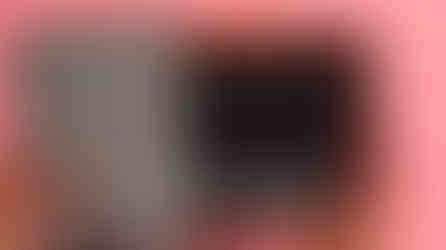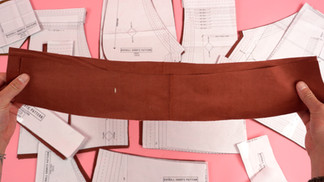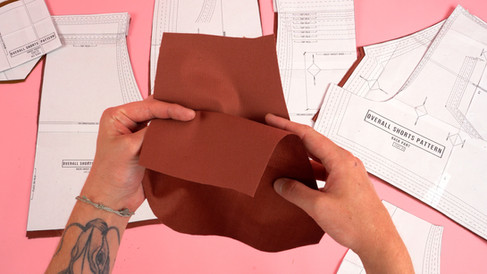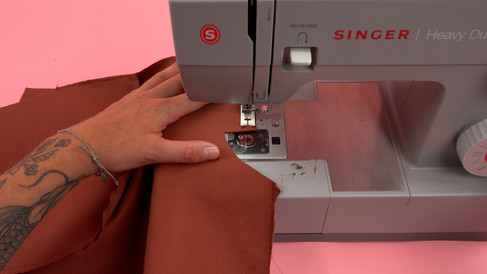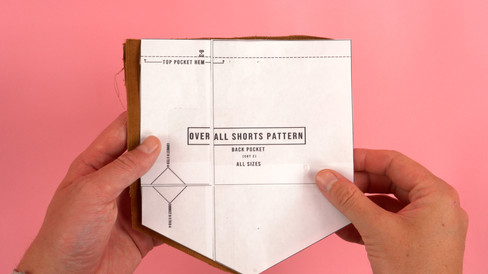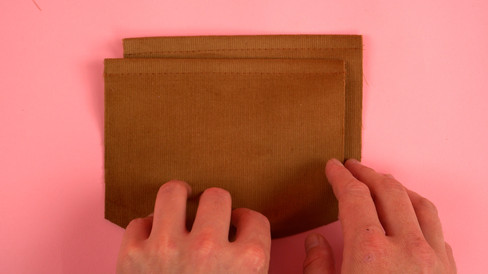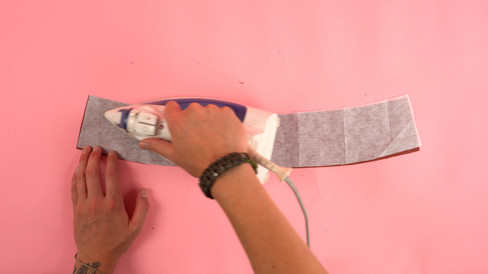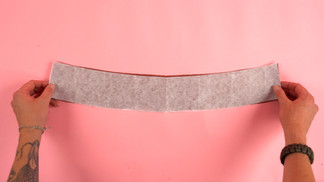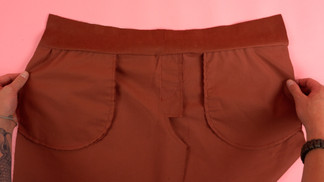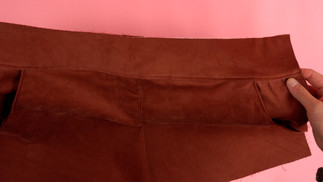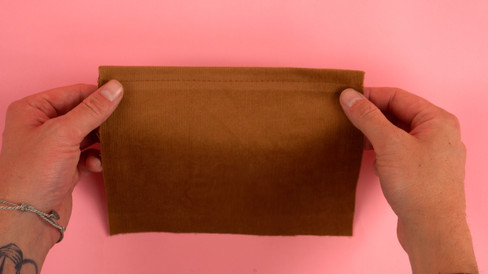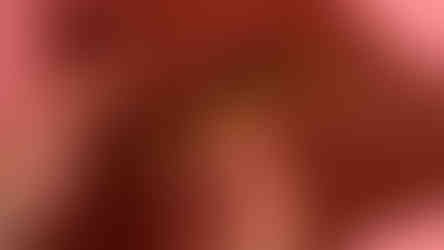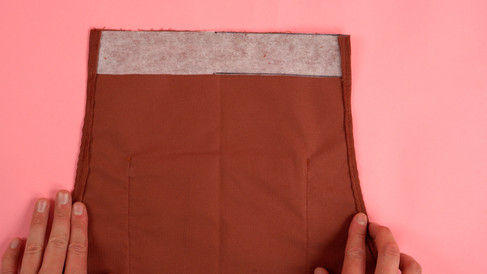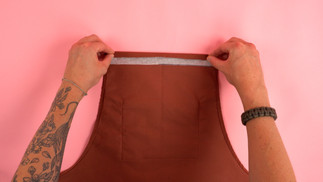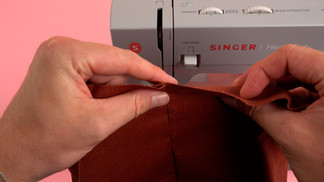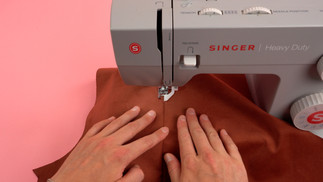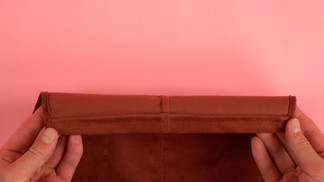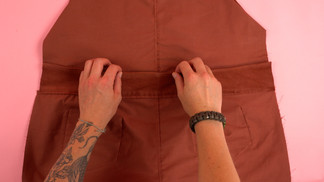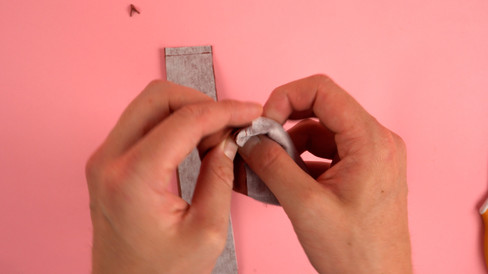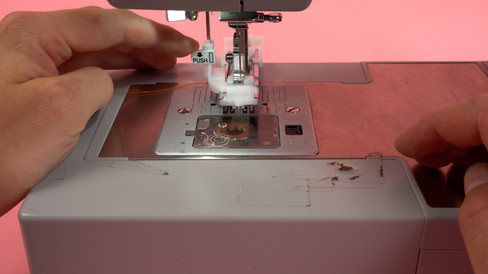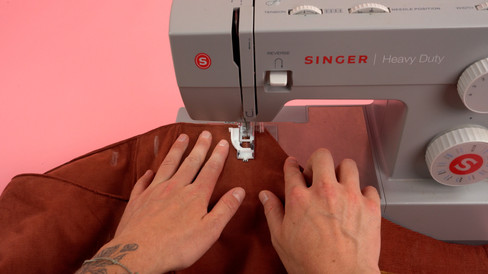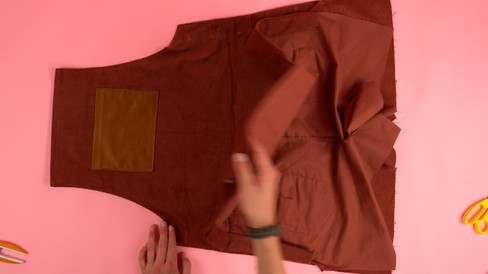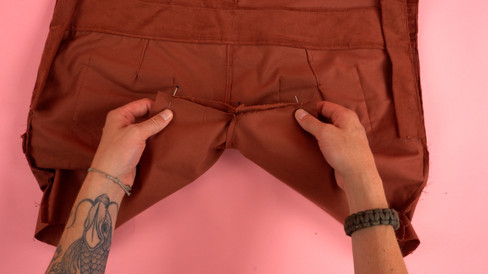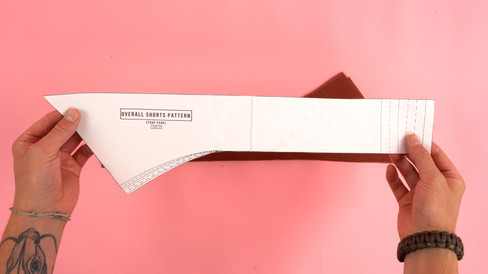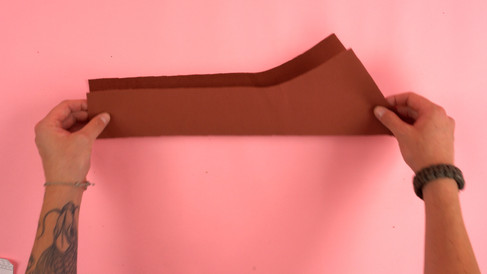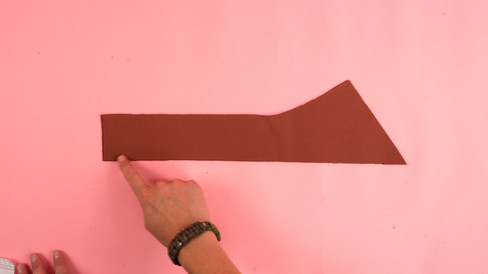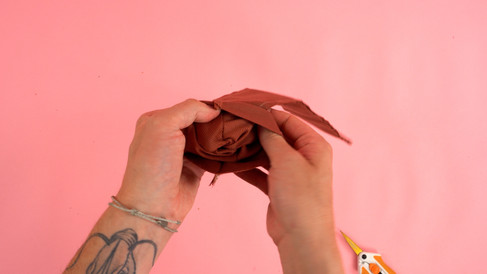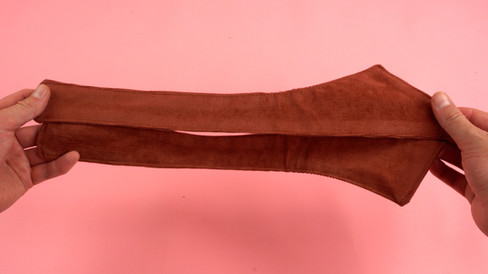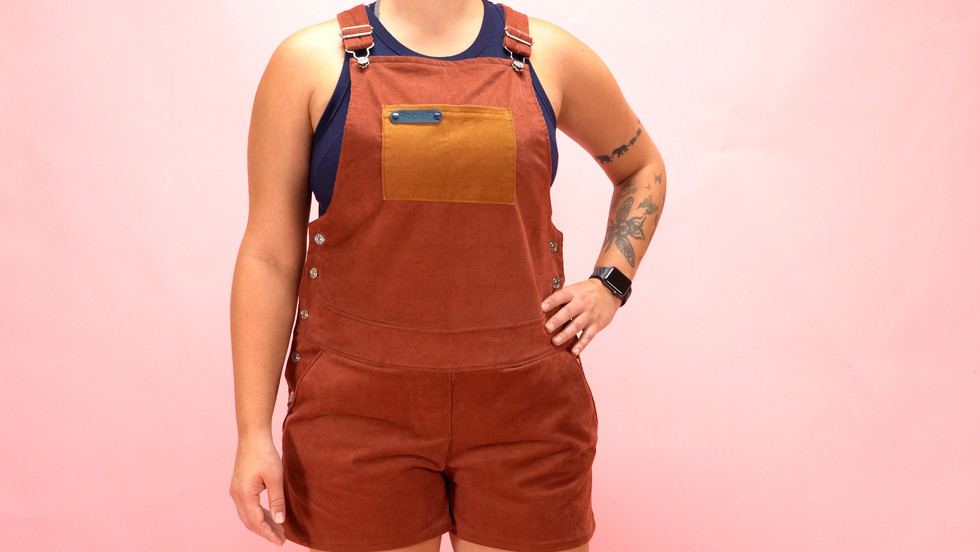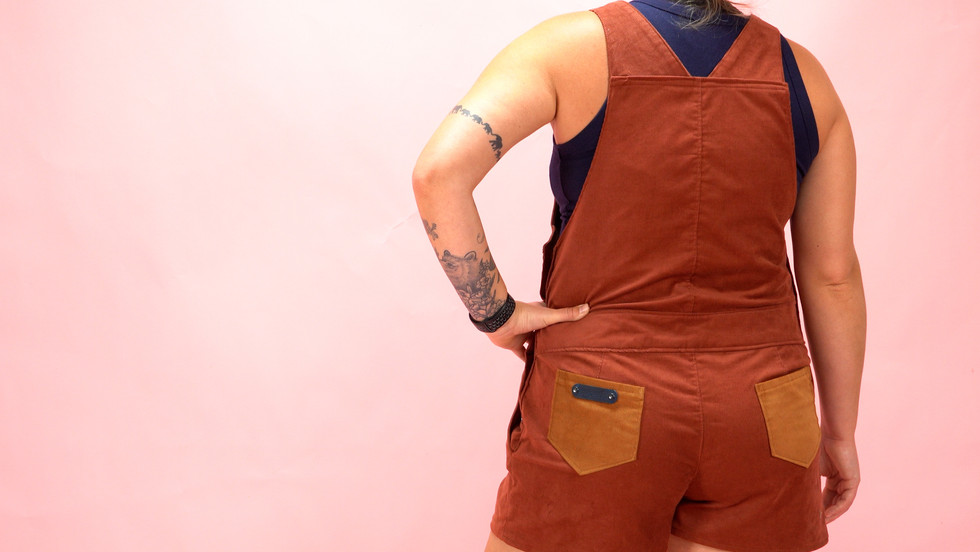Women's Overall Shorts Instructions | Model A001

Pattern Descritption
Model #
A001
Womens overall shorts pattern. Pattern comes in multiple sizes (6-18).
Download includes supply list and full pattern.
All patterns are designed to print on standard household printers.
Printable pattern download link is instantly sent to your email.
DON'T WANT TO READ OFF YOUR DEVICE? PRINT PDF HERE
WANT TO WATCH THE STEP BY STEP VIDEO? LINK HERE
PROJECT SUPPLIES
Main Fabric: | 2 yards (canvas, denim, twill) |
Overall Buckles: | 2 sets (any style) |
Jean Buttons: | 12+ (any style) |
Interfacing: | .25 yards (lightweight) |
Images below show supplies used in project.
NOTE: All supplies can be changed and switched to your liking. Get creative and have fun picking out custom materials.
Recycling/repurposing old clothing and furniture into fabric not only gives these items a second life but also significantly contributes to reducing waste and promoting sustainable living.
List of a few common items: Upholstery Fabric, Curtains and Draperies, Bed Linens and Towels, Sweaters, Denim (jeans and jackets), Sweater, Quilts, Tote bags, Cleaning rags, T-Shirts. Any type of fabric can be utilized and recycled.
SCROLL TO VIEW ENTIRE TABLE CONTENTS
For a professional finish on your project, make sure to check out our recommended machines and tools! We've curated a list of essential sewing equipment to help you achieve that expert look with ease. You'll find all the information you need by clicking the button right here. Don't miss out on elevating your sewing game to the next level!
RECOMMENDED MACHINES/TOOLS
PRINTING PATTERN
When printing your sewing pattern, it's crucial to ensure that the pattern is printed at 100% scale or "actual size" in the print settings. This step is important to maintain the integrity of the design and ensure that the dimensions are accurate for your project. Not adjusting the print settings accordingly can result in a pattern that is either too small or too large, leading to potential issues with the fit and final outcome of your sewing project.
Trim the top and one of the side edges up to the margin box. This will make it help when line up the pages for a perfectly aligned pattern.
Layout the pattern lining up the diamonds and pages in alphanumeric.
Tape pages together.
Cut on the outside of the black line.
CLICK IMAGE TO ENLARGE
PATTERN PIECES
Under Panel: Cut 2 total. 2: Main Fabric | 2: Interfacing Halves (optional)
Waistband Back Panel: Cut 3 total. 2: Main Fabric | 1: Interfacing (optional)
Waistband Front Panel: Cut 3 total. 2: Main Fabric | 1: Interfacing (optional)
Front Interfacing Panel: Cut 4 total. 2: Main Fabric | 2: Interfacing (optional)
Strap Panel: Cut 2 total. 2: Main Fabric
Pocket Panel: Cut 2 total. 2: Main Fabric
Pocket Yoke Panel: Cut 2 total. 2: Main Fabric
Front Pant Panel: Cut 2 total. 2: Main Fabric
Back Pant Panel: Cut 2 total. 2: Main Fabric
Front Chest Panel: Cut 1 total. 1: Main Fabric (on fold) | 1: Interfacing Top Edge Strip (optional)
Back Chest Panel: Cut 2 total. 2: Main Fabric | 1 Interfacing Top Edge Strip (optional)
Chest Pocket Panel: Cut 1 total. 1: Main Fabric
Back Pocket Panel: Cut 2 total. 2: Main Fabric
CLICK IMAGE TO ENLARGE
STEP BY STEP ASSEMBLY
STEP 1
Before assembly locate FRONT PANT PANEL, BACK PANT PANEL, FRONT CHEST PANEL, AND BACK CHEST PANEL.
Mark guides, darts, and placements with chalk on each panel.
STEP 2
Grab both FRONT PANT and POCKET panels.
Place right sides of front pant and pocket panel together along upper left curved edge.
Sew curved edge at .25 inch seam allowance.
Repeat process for opposite front pant panel.
STEP 3
Fold POCKET panel under front pant panel.
Iron folded edge.
Repeat process for other front pant panel.
Topstitch along curved edge.
Pro Tip: Use an edge presser foot for uniform top stitching.
STEP 4
Grab POCKET YOKE panel.
Line up right side of pocket yoke with the pocket panel.
Stitch at .25 inch seam allowance around inside curved edge.
Repeat process for opposite side.
STEP 5
Line up POCKET YOKE top and side with FRONT PANT panel.
Stitch as close as you can to the outside edge on both the top and side were the pocket meets the front pant panel.
Repeat process for opposite front pant panel.
STEP 6
Take both FRONT PANT panels and place the right sides together.
Sew at .25 inch seam allowance along fly edge.
Do not sew the entire edge. Stop sewing after curved edge.
STEP 7
Open right side of FRONT PANT panel.
Fold in zipper fly opening and sew along curved guide.
After sewing curve. Sew vertical edge to the right of the curve.
STEP 8
Grab BACK POCKET panel.
Fold top edge over .25 inch and another .25 inch hiding the raw edge.
Iron the folded edge.
Stitch folded edge and repeat process for the other pocket panel.
STEP 9
Fold the bottom edges of BACK POCKET panel over one time and iron.
Fold the side edges over one time and iron.
Repeat process for opposite back pocket panel.
STEP 10
Grab BACK POCKET panel and BACK PANT panel.
Using the guides on the back pant panel. Line up the pocket with the marked guides.
Pin back pocket panel in position.
Stitch into place leaving the top edge open.
STEP 11
Fold the dart lines together with right sides touching.
Stitch dart on the right side of the fabric.
Make sure the excess fabric on the wrong side points towards the inside seam.
STEP 12
Place right sides of both back pant panels together.
Stitch inside curve edge at .25 inch seam allowance.
STEP 13
Roll seam allowance to the left or right.
Topstitch along the entire curved inside seam.
STEP 14
Grab one WAISTBAND BACK panel and interfacing.
Iron interfacing to wrong side of WAISTBAND BACK panel.
STEP 15
Grab both WAISTBAND BACK panels.
Place the right sides of the interfaced panel and back pant panel together.
Grab opposite waistband panel (non interfaced panel) and place the right side of the waistband panel to the wrong side of the back pant panel.
Line up the centers of both waistband back panels with the center of the back pant panel.
Pin waistband panels on position.
Sew at .25 inch seam allowance along top edge of waistband.
STEP 16
Fold open WAISTBAND BACK panels so the wrong sides are touching.
Iron the seam.
Topstitch on the waistband side.
STEP 17
Repeat steps 14-16 for the WAISTBAND FRONT panel.
STEP 18
Grab FRONT POCKET panel.
Roll top edge .25 inch over and another .25 inches. Hiding the raw edge.
Iron folded edge.
Stitch folded edge.
STEP 19
Fold the bottom edges over one time and iron.
Fold the side edges over one time and iron.
Place FRONT POCKET panel on FRONT CHEST panel.
Using the guides on the front chest panel. Line up the pocket with the marked guides.
Pin front pocket panel in position.
Stitch into place leaving the top edge open.
STEP 20
Flip FRONT CHEST panel to the wrong side.
Cut interfacing to the size of the top edge as marked on pattern.
Iron interfacing to top edge of front chest panel.
Fold curved side edges over twice hiding the raw edge.
Iron the folded edges.
Sew curved edges.
STEP 21
Fold top edge over twice hiding raw edge.
Sew along top edge.
STEP 22
Grab both BACK CHEST panels.
Place the right sides together.
Stitch at .25 inches along straight inside edge.
After sewing. Fold seam allowance the left or right and add topstitch.
STEP 23
Repeat steps 20 and 21 for BACK CHEST panel.
STEP 24
Grab BACK PANT panel and BACK CHEST panel.
Place right sides together. Lining up the center of the waistband and back chest panel.
Only stitch the outside interfaced waistband to the back chest panel.
STEP 25
On the wrong side of the back panel.
Roll the top edge of the waistband back panel over.
Iron edge down.
Topstitch from the right side sewing both inside and outside waistband back panels.
STEP 26
Repeat steps 24 and 25 for with the FRONT CHEST panel and FRONT PANT panel.
STEP 27
Grab FRONT INTERFACING panel.
Place interfacing on the wrong side of panels.
Iron interfacing to panels.
STEP 28
Roll top curved edge of front interfacing panel.
Line up front interfacing panel with complete front chest/pant panel.
Sew at .25 inch seam allowance.
Repeat process for opposite side.
STEP 29
Roll FRONT INTERFACING panels towards the back.
With the wrong sides touching. Iron the edges.
Topstitch along the top curved and side edge.
Repeat process for opposite side.
STEP 30
Grab UNDER panel.
Place interfacing on half of under panel.
Fold under panel in half (hot dog style) with right sides touching.
Sew top edge at .25 inch seam allowance.
Clip the inside corner of seam allowance.
STEP 31
Flip the under panels right side out.
Iron the fold.
STEP 32
Grab complete BACK CHEST and BACK PANT panel.
Place the under panel right sides together with the raw edges pointed towards the outside.
Sew at .25 inch seam allowance.
Repeat process for opposite side.
STEP 33
Fold the under panel towards the back.
Iron and stitch along the outside edge.
STEP 34
Cut small paper strips the size of your button diameter.
Space out strips on complete FRONT CHEST and FRONT PANT panel assembly.
Mark with chalk.
STEP 35
Using a buttonhole presser foot on a domestic sewing machine simplifies the process of creating buttonholes. Here’s how to use one:
Attach the Buttonhole Foot: Remove the current presser foot from your sewing machine and attach the buttonhole foot. This is typically done by clipping the foot onto the shank. Ensure it is securely in place.
Mark the Fabric: Before sewing, mark the position and length of your buttonhole on the fabric. This usually involves marking the start and end points of the buttonhole, ensuring it is big enough for your button to fit through comfortably.
Position the Fabric: Place the fabric under the presser foot, aligning the start mark with the needle's position. The buttonhole foot will have a guide that should be parallel to the buttonhole's length direction.
Set the Sewing Machine: Select the buttonhole stitch on your sewing machine. Many machines have a one-step or four-step buttonhole setting. If your machine has a one-step function, it will create the buttonhole automatically based on the size of the button you set in the foot. For a four-step buttonhole, you will need to go through each step manually, following your machine’s instructions.
Start Sewing: Lower the presser foot and start sewing. If your machine has a one-step buttonhole function, it will stitch the entire buttonhole automatically. For four-step buttonholes, follow your machine's manual to sew each side and bar tack separately. Keep the fabric steady and let the machine pull it through; do not push or pull the fabric.
End the Buttonhole: Once the machine completes the buttonhole, raise the needle and presser foot, and cut the thread. If your machine requires manual steps, complete all steps to finish the buttonhole.
Cut the Buttonhole Open: Use a seam ripper or small scissors to carefully cut open the buttonhole. Insert a pin at one end of the buttonhole to prevent accidentally cutting beyond the end stitches.
Remember, the specifics can vary based on your sewing machine model, so refer to your machine’s manual for detailed instructions tailored to your equipment. Practicing on scrap fabric before working on your actual project is always a good idea to ensure perfect results.
Always test button hole stitch on scrap fabric. Make sure the button can fit through the button hole and not slip out easily.
STEP 36
Once satisfied with button hole settings.
Add button holes to the marked areas on the FRONT CHEST and FRONT PANT panel assembly.
STEP 37
Grab the front and back completed panels.
Place the right sides together.
Line up the bottom outside edges.
Sew at .25 inch seam allowance.
ONLY sew the bottom edge up to the pocket.
STEP 38
Roll the inside seam allowance to the left or right.
Topstitch the out side seams.
STEP 39
STEP 40
Roll seam allowance to the left or right.
Topstitch inside seam.
STEP 41
Roll the bottom leg openings over twice towards the inside. Hiding the raw edge.
Pin the edge down.
Sew all the way around the folded edge.
STEP 42
Grab STRAP panels.
Place the right sides together.
Sew around the outside at .25 inch seam allowance leaving the bottom edge open.
STEP 43
Clip the corners of the top edge.
Pull the right side out.
Iron the strap panel.
STEP 44
Fold the bottom edges in towards each other.
Pin down so no raw edges are exposed.
Topstitch along the entire outside edge.
STEP 45
Strap buckles come in a few different styles.
Choose the buckle that best suits your style.
STEP 46
Start by threading the top of the strap through the strap adjuster from bottom to top and back through the towards the bottom.
STEP 47
Feed strap buckle on strap.
Wrap top of strap back towards strap adjuster.
Feed strap back trough the strap adjuster back opening from the bottom side.
Pull strap end though back opening.
STEP 48
Feed slack though strap adjuster. Allowing space to sew down strap end.
Roll the strap end back down onto itself.
Sew strap end down.
Repeat process for opposite strap.
STEP 49
Place straps on the inside of the complete back chest panel.
Line the curve of the strap up with the outside edge.
Sew the straps down.
STEP 50
Line up straps with the outside edges of front chest panel.
Mark the inside buckles with chalk.
Poke hole through the front chest panel.
Feed male end of jean button though hole.
Add female end of jean button.
Depending on the style of jean button either apply presser or screw into secure tight position.
Repeat process for opposite strap.
STEP 51
Using the same buttons for the sides. Line up the button holes on the top of the under panel.
Mark through the button holes with chalk.
Add jean buttons on chalk marks.
FINISHED
The final step is adding your custom branding. Adding a branded leather patch to your overalls is a fantastic way to customize and elevate the final product. By incorporating your brand, you not only enhance the aesthetic appeal but also infuse a sense of identity and uniqueness into the design. Here's how the process works, especially with the use of double-sided rivets, to secure the branded leather effectively:
Branded Leather Creation: The first step involves creating a leather patch that carries your brand's logo or name. This can be achieved through various methods such as stamping, burning, laser engraving, or embossing, depending on the desired effect and the resources available. The key is to ensure clarity and durability of the branding on the leather, as this will be a prominent feature of the overalls.
Positioning: Once the branded leather patch is ready, the next step is to decide on its placement on the overalls. The location is crucial as it affects visibility and aesthetics. Common spots include the front center, where it's most visible, or on a discreet side for a more understated approach. The goal is to choose a spot that complements the design of the fanny pack and enhances its overall look.
Using Double-Sided Rivets: Double-sided rivets are chosen for their strength and ability to securely fasten the leather patch without damaging the materials. To attach the patch, small holes are made in the corners of the leather patch and corresponding spots on the overalls. The double-sided rivets are then inserted through these holes from the underside of the fanny pack fabric, through the leather patch, and capped on the top side. A rivet setter tool is used to clamp down the rivets, ensuring a tight and secure attachment.
Adding a branded leather patch with double-sided rivets to a overalls not only personalizes the item but also significantly boosts its value, making it a unique piece that stands out. This customization is a testament to craftsmanship and attention to detail, reflecting the maker's pride and the brand's identity. It transforms the overalls from a mere accessory into a statement piece, enhancing its appeal to customers looking for something special and personal.
Thank you! for taking the time to explore our fanny pack sewing project! It's been a pleasure to share this creative journey with you, and I sincerely hope you enjoyed the process of making your very own overalls. Crafting something with your own hands is a rewarding experience, and using your creativity to produce a beautiful, finished product is truly special. I hope that your fanny pack not only turned out great but also reflects your unique style and creativity. Thank you again for joining in on this sewing adventure. May your new overalls accompany you on many exciting outings, filled with pride in your craftsmanship and the joy of creation.
CLICK IMAGE TO ENLARGE
FULL STEP BY STEP VIDEO INSTRUCTIONS
Need a Visualization of the Sewing Process?
Dive into our detailed step-by-step video tutorials to effortlessly navigate through any confusing steps or simply to gain a clearer visualization of the sewing process. These tutorials are designed to provide you with comprehensive guidance, ensuring you have a smooth and enjoyable sewing experience. Whether you're a beginner seeking clarity or an experienced sewer looking for tips, our videos are a valuable resource to help bring your project to life with confidence.
Show the Finished Project!
We absolutely love seeing your creative masterpieces come to life using our sewing patterns! Share your finished projects with us by tagging @properfitclothing on Instagram and any other social media platforms. Your unique creations not only inspire us but also the entire sewing community. Don't miss this opportunity to showcase your talent and be part of our growing family of passionate sewers. Let the world see what you've made – we can't wait to celebrate your amazing work!

